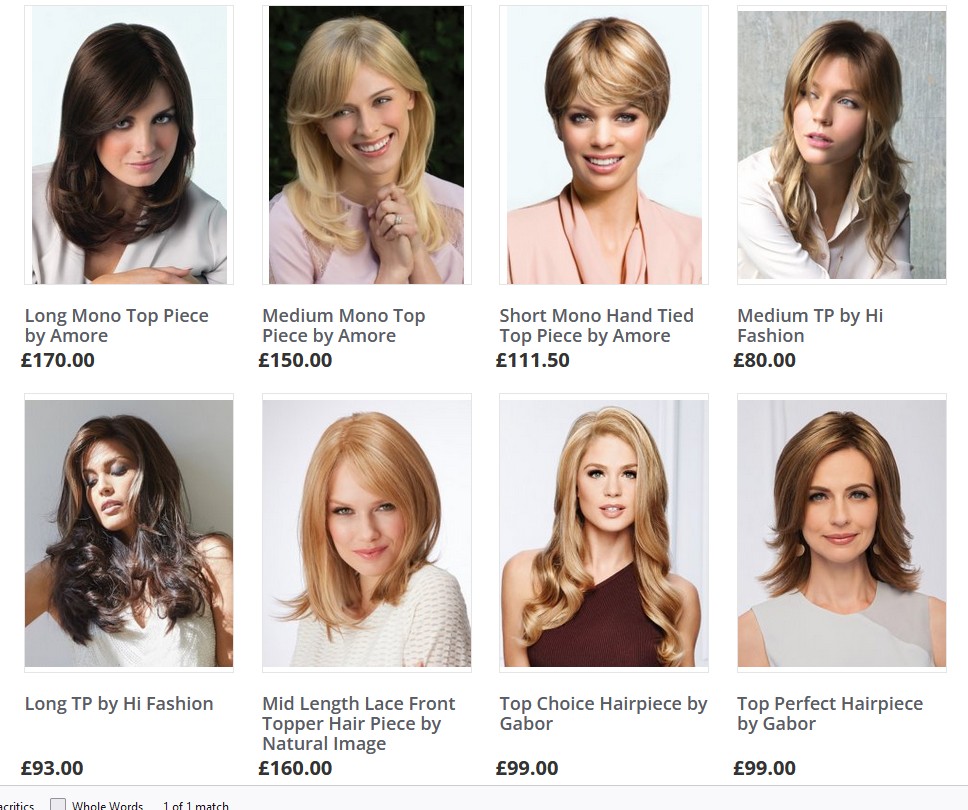Wigs for Alopecia
Alopecia is an autoimmune disorder that causes hair loss, typically on the scalp but it is a skin condition that can affect other areas of the body as well. It affects both men and women of all ages and can start at any age, though it is most commonly seen in adults between the ages of 20 and 50. The condition can cause full or partial hair loss, and in some cases may even lead to complete baldness.
When it comes to living successfully with alopecia, wearing a wig is one of the most popular solutions. Wigs are made of either synthetic or human hair and are designed to fit snugly on your head. A hair loss wig can provide you with a natural-looking hairstyle while also protecting your scalp from further damage and irritation caused by the condition.
Different Types of Alopecia
Alopecia areata is the most common type of alopecia and is characterized by round patches of hair loss on the scalp. Alopecia totalis is a more extreme form of alopecia areata that causes complete baldness on the scalp. Wearing a wig can provide many benefits here are some of them.
Benefits of Wigs for Alopecia
1. Concealment: A hair loss wig can be used to help conceal any visible areas of hair loss and provide a natural-looking hairstyle in the process. This can help you feel more confident about your appearance and reduce any feelings of embarrassment.
2. Comfort: Wigs are typically made from lightweight materials that are both comfortable and breathable. This can help reduce any irritation or discomfort on the scalp that may be caused by the condition.
3. Low Maintenance: Unlike other hairstyles, wigs require minimal styling and maintenance. This can make them an ideal option for those who may not have the time or energy to maintain their hair.
4. Versatility: Wigs come in a variety of styles, lengths, and colors, so you can choose one that best reflects your personal style and preferences. This makes them a great way to express yourself and try out different looks without having to worry about any visible signs of hair loss.
How wearing a wig can give you a confidence boost?
Wearing a wig when you have alopecia can be a great way to boost your confidence and help you feel more comfortable in your own skin. Wigs provide a natural-looking hairstyle that can help to conceal any visible signs of hair loss, making it easier to feel confident and socialize without worry. Additionally, wearing a wig can give you the flexibility to express yourself through different wig styles and the wide range of colors available, allowing you to experiment with new looks without worrying about any visible signs of hair loss.

Confidence, Versatility and Style Options
Wigs provide a great way to express yourself and try out different looks without having to worry about any visible signs of hair loss. There is a wide range of quality wigs with different hair types, styles, lengths, and colours available, so you can choose one that best reflects your personal style and preferences. Additionally, many wigs come pre-styled with volume and lift, providing you with an instant confidence boost.
Natural-looking Results
Wearing a wig can provide natural-looking results. Many wigs are designed to look and feel just like your own hair, giving you the confidence that you need to face the world with a full head of hair. The lightweight materials used in most wigs won't weigh down your head or cause any further irritation to your scalp.
Comfort and Security
Wearing a wig can provide comfort to alopecia sufferers being both lightweight and breathable with a snug fit for a feeling of security.
Types of Wigs for Alopecia
There are a wide variety of wigs available, here are some of the most popular:
1. Human Hair Wigs: or Real Hair wigs look and feel just like your natural hair, allowing you to have a realistic hairstyle that is virtually indistinguishable from your own.
2. Synthetic Wigs: are made from synthetic materials that are designed to look and feel just like human hair, providing a realistic look with less maintenance than natural hair wigs.
3. Lace Front Wigs: are made from a thin mesh material that gives the appearance of a natural hairline, allowing you to have a realistic and natural-looking hairstyle.
4. Heat-Friendly Wigs: are designed to withstand the heat from a hair dryer, hair straighteners or other styling tools, allowing you to style your wig without worrying about damage or frizz.
Partial Hair Loss Solutions
For those with partial hair loss, there are a variety of solutions available. While wigs are an excellent solution for those suffering from total hair loss, they may not be suitable for everyone. Luckily, there are other options available that can help you to conceal visible signs of hair loss without having to wear a full wig. Some of these include toppers and half wigs which are recommended if the hair loss is localised to only the crown and upper parts of the head.
Cost Considerations for Wig Purchases For those suffering from alopecia
Purchasing a wig can be a significant investment. The cost of wigs depends on the type and quality of the material used, so it is important to think carefully about your budget before making any purchase. Additionally, it is important to shop around and compare prices from different vendors in order to find the best deal available.
n.b. A Medical Exemption Certificate (Tax Credit Exemption Certificate) may help to keep health costs down, and may be available to hospital inpatients, and those undergoing cancer treatments. You may be eligible for a VAT exemption, or a prescription wig on prescription from the NHS Wigs.
How to Choose the Best Wig for you if you have Alopecia?
When choosing the best wig for you, it is important to consider the type of hair loss that you have and your lifestyle. For those with total hair loss, a full wig may be necessary in order to provide a realistic hairstyle. Those with partial alopecia may want to opt for a more natural-looking solution such as extensions or a hair pieces. Additionally, you should consider whether a human hair wig or one made from synthetic hairs would suit you best. Consider which types of wig you would feel most comfortable wearing, as well as the amount of maintenance that is required for each option. Finally, be sure to choose a wig that best fits your budget and lifestyle, wig Fitting by a wig specialist is recommended.

 View prices in your own currency
View prices in your own currency

 Free Shipping
Free Shipping Special Gift Card
Special Gift Card New products every day
New products every day We work 24/7
We work 24/7 Trying on before buying
Trying on before buying